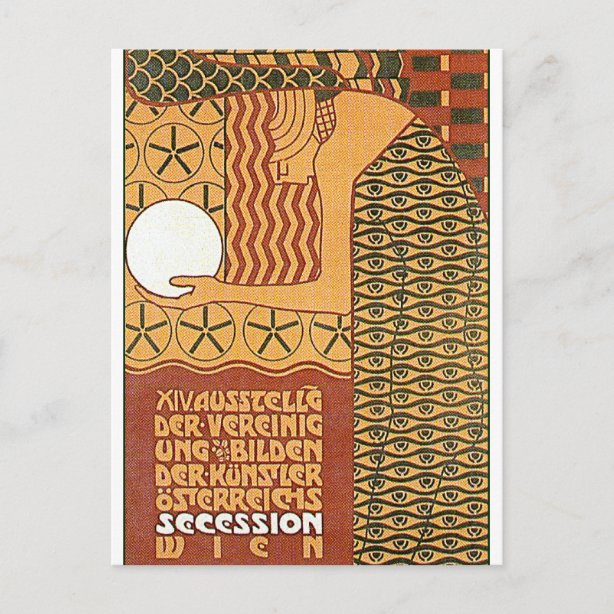

- #Vienna secession exhibit 10 how to#
- #Vienna secession exhibit 10 skin#
- #Vienna secession exhibit 10 free#
Starting in the mid-19th century in Vienna, anatomy became the first and foremost discipline of the medical sciences. In Schiele’s late work, finally, a bright red was occasionally used in spots to mark out erogenous zones. They express emotions coming to the surface.
#Vienna secession exhibit 10 skin#
Pure tones on the skin indicate points where the skeleton is rubbing against it, the pressure exerted by the organs, the rush of blood beneath the epidermis. The body was covered by a uniform fluid or broken down by zones. The main innovation, however, occurred in the realm of color, which was freed at this time from the strictures of realistic representation.
#Vienna secession exhibit 10 free#
He also broke free of the dictates of how a student was to orient the sheet of drawing paper some of his sheets can be read in either direction, vertically or horizontally. Occasionally he would only keep cut-off sections of their bodies in his composition. Egon Schiele got up from the student’s stool to pace around, leaning in close to his models and moving around them.
#Vienna secession exhibit 10 how to#
It was only later, in a second phase, that the pupil would be introduced to oil painting, discovering how to obtain a colored rendering of skin tones through thin runny layers of pigment.įrom the start of his time at the School of Applied Arts, Oskar Kokoschka fought the static aspect of the poses and their conventional character. The model would hold a pose and the same drawing would be worked over and over until it satisfied the instructor. They learned to analyze the effects that the play of joints and muscles has on the surface of the body. Around these virginal surfaces, sinuous lines and blocks of uniform colors shaped a kind of brightly colored setting for stylized or geometric motifs.ĭuring their training at an academy, artists would take drawing classes working from nude models.

It was nakedness, of the human body and the façade of buildings stripped of their pompous decorations and brought back to a smooth unadorned whiteness, that initially expressed the common struggle to get back to truth. It placed this creative impetus under the banner of a season, spring, and an age in life, youth. A fresh breeze was indeed blowing through the land, awakening minds.

They created a review for debating the art questions of the day called Ver sacrum (literally “sacred spring”). They launched a program of ambitious shows and events that joined the great names of international modernity to the local art scene. In 1898, the Secessionists built an exhibition hall. The idea was to put an end to the supremacy of academicism and historicism, which were only perpetuating the obsolete values of the aristocracy, and the conservatism of the Society of Austrian Artists. As in other European cities, the time had come for Vienna to forge an independent national modern style. Printable versionĭer Zeit ihre Kunst – Der Kunst ihre Freiheit, or “To the age its art, to art its freedom.” This motto of the Viennese Secession, an association of dissident artists founded in 1897 and presided over by Gustav Klimt, announced a revolution in the capital of the old Austro-Hungarian Empire. The exhibition continues on the second floor, which is devoted to the living environment and its adaptation to the needs of the new human being. On the first floor you are invited to discover how the Viennese artists made their contribution to modernity by endowing skin with a novel visual expressiveness. By exploring the mysteries of this sensitive surface, the Viennese artists were to redefine modern humans’ connections to the world, everyday objects and their surroundings, buildings and streets. The show traces the emergence of a new sensibility expressed by formal, visual work that focuses on skin. The exhibition offers a new reading of the vast body of work created by these revolutionary artists between 1897 (the founding of the Vienna Secession) and 1918 (the end of the Austro-Hungarian Empire). Rejecting the conventions of academicism in painting and historicism in architecture and the applied arts, these artists were on a mission to lay bare the true identity of human beings in the 20th century and reconcile them with their deep instincts, nature and

In the Vienna of 1900, a phalanx of artists was to write one of the most significant episodes in the birth of modern art.


 0 kommentar(er)
0 kommentar(er)
